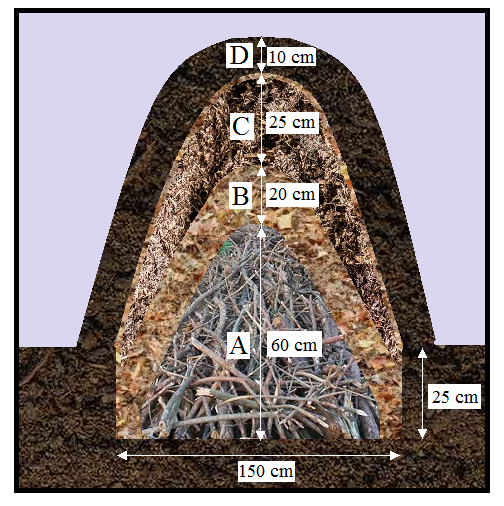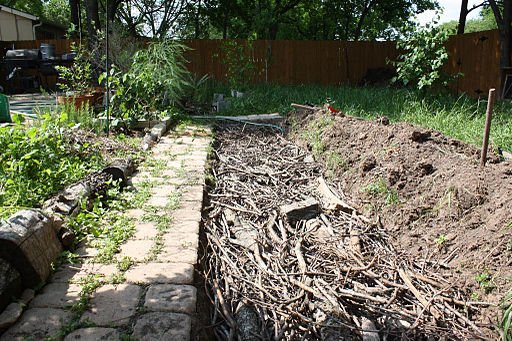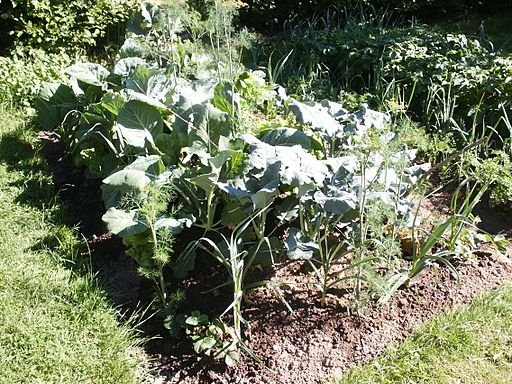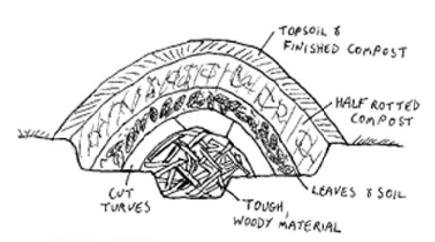PERMACULTURE - Hugelkutur - centuries old practice popularized once again by Sepp Holzer (lesson 31)
HUGELKULTUR
Probably there are as many methods of producing food as gardeners in the world. We have discussed some of the most important ones in the previous lessons, of which the greatest importance was placed on the raised beds. I would like to devote today's lesson to a special version of the European raised bed, which has been used for several hundred years - the German Hugelkultur (i.e. "hilly cultivation")
What is Hugelkultur?
This is one of the methods that significantly facilitate the production of food in the garden, especially recommended in places where the soil is quite poor, but it can also be used on more fertile soils. As with all raised beds, it involves growing plants on a slight hill with a specially prepared substrate, thanks to which the vegetation period is extended. The elevation warms the soil, allows you to store moisture more effectively, protects plants against some pests and weeds.
The raised bed is cultivated on constantly decaying organic matter, the basis of which is humus, extremely rich in nutrients. Moreover, the lignins formed during the decay of wood are further broken down into humus - the material most suitable for plant growth. Preparing a bed is quite laborious, but the list of advantages more than rewards the effort.
Advantages of Hugelkultur:
- extended vegetation period of plants
- more heat because of the soil heated from the bottom and better exposure of plants to the sun
- from the second year, protection against drought thanks to moisture from decaying wood and increased ability to store water from rainfall by the hill
- easier access to plants, no need to bend down
- enables the cultivation of plants in poor soils
- creates various microclimates - due to its shape, it has a more and less sunny side, exposed and sheltered from the wind, drier and more humid
- By allowing the sides to be planted, it has a larger area suitable for cultivation
Building a Hugelkultur
The main difference between Hugelkultur and the traditional raised bed is that the Hugelkultur is made primarily of wood.
- Prepare a small hole. Pile the wood from the largest pieces to the smallest. Branches, sticks, boughs, old boards (not impregnated), sawdust ... Any wood can be used except conifers which make the soil acidic (unless you intend to grow acidophilic plants) or walnut. Remember that the wood should be dried, preferably at least one year old. Fresh, straight-cut wood will gas the ground instead of fertilizing it.
- Cover everything with biological waste from the kitchen and sawdust, to form a compact, tight whole.
- Cover it all with a few centimeters of soil. 20-25 cm should be enough for most plants, but the thickness of the layer should depend on the depth of the root system of the plants you plan to grow there.
- Mulch the whole thing, preferably with straw. It is also good to mulch the immediate area around the bed, reducing the risk of weeds spreading onto our hill.
The most advantageous sizes of hugelkultur are 1.5 meters high (minimum 1 meter), 2 meters wide, a fairly sharp angle of inclination, and any length. Over time, the shaft will get lower and lower as the decaying wood takes up less and less space, creating humus instead. After 6 years at the earliest (but if you use whole tree trunks, even after 20 years), the hill will be level with the soil and it should be rebuilt.
Remember that the shaft does not have to resemble a regular bed. You can make it in the shape of a triangle, circle, or square - only your imagination is a limitation here.
All my lessons are shared totally for free with a CC-0 license (which means you can copy my text and share it wherever you want to, without the need to mark me as an author). I hope it will bring you joy.
Previous lessons can be read here:
Fertilizers
2 - types of manure and when to use it
3 - Compost. Basics
4 - advanced composting
6 - Green manure
7 - Phytosanitary plants
8 - Mineral fertilizers
--------------------------------------------------
Soil and minerals
10 - Boron, Molybdenum, Copper, Magnesium
11 - Zinc, Calcium, Iron and other elements
12 -soil components: sand and clay
14 -soil components: calcium, microorganisms, minerals
15 -soil components: water and air
--------------------------------------------------
Space
17 - Sectors in Permaculture
18 - Zones & sectors, practical use
19 - Perfect size of your garden
20 - What to choose lawn or meadow?
22 - Water reservoirs in the garden
23 - Rock Garden
24 - Patchwalks
--------------------------------------------------
Basics of traditional permaculture
26 - Basic tips for permaculture gardeners
27 - The Keyhole bed
28 - Raised beds/Lazy beds
--------------------------------------------------
Food production
29 - homemade sugar in non-tropical climate
Thank you for reading,
@papi.mati




#club5050 😀
Congratulations, your nice post has been upvoted by the steem.skillshare curation trail!
If you wish to join as well our trail and support our community, other users, and earn the curation reward, please check out this post:
steem.skillshare curation trail post